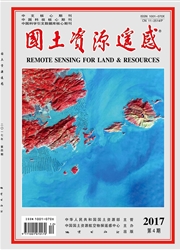

 中文摘要:
中文摘要:
利用6S模型对1990年、1995年、2000年及2005年的TM影像进行大气较正,获取4期NDVI和土地利用信息,选择3种土地利用指标与NDVI变化进行相关性分析。结果表明:广州市NDVI平均值具有在1990年~2000年间下降,2000年后略为上升的趋势,NDVI的空间变化趋势与城市发展格局相一致;土地利用程度较高,变化率较大,城市用地扩展强度近期明显增强;将土地利用指标与NDVI进行耦合分析,得到土地利用程度综合指数和NDVI变化的定量关系模型,修正判定系数达0.88以上,较好地反映了两者的关系,且土地利用程度变化率对NDVI的影响程度大于城市用地扩展程度对NDVI变化的影响程度。
 英文摘要:
英文摘要:
Urbanization is the main factor responsible for the driving force of NDVI change. Based on the atmospheric correction by means of the "6S" model, the authors obtained the NDVI data and land use maps from TM imagery. These data were used to study the correlative relationship between NDVI change and land use in G City as well as relevant problems. The results show that the vegetation coverage in Guangzhou decreased uangzhou continu- ously from 1990 to 2000 but began to increase slowly afterwards. The decrease rates were different in space and were consistent with the city development pattern. The land use degree and city expansion indexes remained increasing after 2000. The model of quantitative relationship with a high adjusted R2 of 0.88 was simulated by using associative analysis, and the result shows that the vegetation decrease is highly related to the activities of human beings in Guangzhou City. Much research work remains to be done in future.
 同期刊论文项目
同期刊论文项目
 同项目期刊论文
同项目期刊论文
 期刊信息
期刊信息
